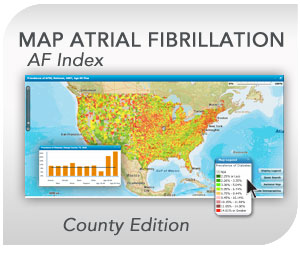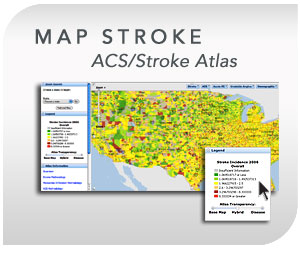Stroke Reports
Tuesday, February 26th, 2013

Lancet Neurology: March 1, 2013 Ischaemic stroke is one of the leading causes of death and disability worldwide, and intravenous alteplase is the only proven effective treatment in the acute setting. Hypothermia has been shown to improve neurological outcomes after global ischaemia—hypoxia in comatose patients who have had cardiac arrest, and is one of the most […]
Stroke Reports
Tuesday, February 26th, 2013

STROKEAHA: February 19, 2013 Background and Purpose—Guidelines recommend carotid endarterectomy (CEA) within 2 weeks from an ischemic event. However, previous studies have shown that only a minority of patients undergo CEA within this period. The aim of this study was to examine the effect of a multidisciplinary nationwide initiative aimed at reducing time to CEA after […]
Stroke Reports
Tuesday, February 26th, 2013

Medical Xpress: February 19, 2013 Heart and cerebro-vascular disorders represent the two leading causes of death throughout the world. They are sometimes combined in a single patient and their combination represents both a considerable risk to the patient and a therapeutic challenge. Read more
Stroke Reports
Tuesday, February 26th, 2013

STROKEAHA: February 19, 2013 Background and Purpose—A correlation has been found between periodontal disease (PD) and stroke. This study was conducted to investigate whether dental prophylaxis and periodontal treatment reduce the incidence rate (IR) of ischemic stroke. Methods—We identified 510 762 PD cases and 208 674 non-PD subjects from January 1, 2000, to December 31, 2010. […]
Stroke Reports
Tuesday, February 26th, 2013

STROKEAHA: February 14, 2013 Background and Purpose—Diffusion-weighted imaging sometimes fails to detect early computed tomography (CT) ischemic lesions in acute ischemic stroke patients, which is termed reversed discrepancy (RD), but its clinical significance remains unclear. The incidence and factors associated with RD in acute ischemic stroke patients within 3 hours of onset were examined. Methods—A total […]
Stroke Reports
Friday, February 22nd, 2013

J NeuroIntervent Surgery: February 18, 2012 Objectives Endovascular therapy of acute ischemic stroke is evolving towards thrombectomy devices for vessel recanalization. High rates of revascularization have been reported in stroke device trials. However, the discrepancy between recanalization and outcomes raises the question whether patients with irreversible ischemic injury are being exposed to these interventions. This study evaluated […]
Stroke Reports
Friday, February 22nd, 2013

American Heart Association: February 08, 2013 American Stroke Association Late-Breaking Science Report: Abstract LB 8 – Embargoed until 7 a.m. HT/ noon ET on Friday, Feb. 8, 2013 Study Highlights: Survivors of small-artery strokes who lowered their systolic blood pressure below 130 mm Hg were less likely to suffer a hemorrhagic stroke (bleeding in the brain) […]
Stroke Reports
Friday, February 22nd, 2013

American Heart Association: February 08, 2013 American Stroke Association Late-Breaking Science Report: Abstract LB 9 Embargoed until 7 a.m. HT/ noon ET on Friday, Feb. 8, 2013 Study Highlights: In patients who had endovascular therapy added to intravenous clot-busting drugs to restore blood flow after a stroke within seven hours, every 30-minute delay in breaking up […]
Stroke Reports
Friday, February 22nd, 2013

American Heart Association: February 8, 2013 American Stroke Association Late-Breaking Science Report: Abstract LB 11 Embargoed until 7 a.m. HT/ noon ET on Friday, Feb. 8, 2013 Study Highlights: Adding a second drug to aspirin therapy lowered the risk of a second stroke in the weeks after a clot caused minor stroke or TIA in Chinese […]
Stroke Reports
Friday, February 22nd, 2013

CIRCULATIONAHA: February 7, 2013 Background—Comprehensive stroke centers allow for regionalization of subspecialty stroke care. Efficacy of endovascular treatments, however, may be limited by delays in patient transfer. Our goal was to identify where these delays occurred and to assess the impact of such delays on patient outcome. Read more



































